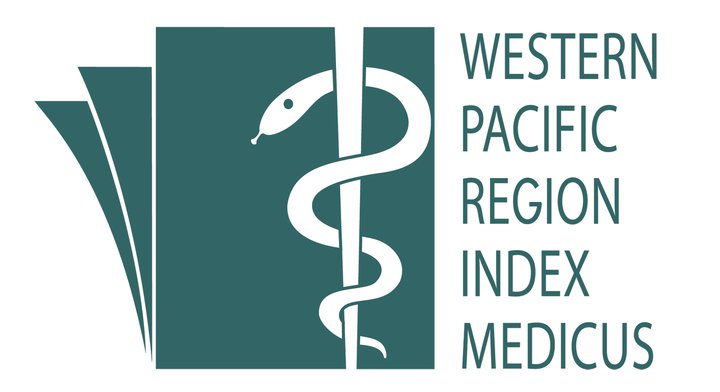Sexual Function and Sexual Frequency among Chinese Women in Hong Kong: Implications for Public Health Services
Keywords:
female sexual dysfunction, public health, Hong Kong Chinese women, risk factor, women's health, sexual frequencyAbstract
Â
Abstract
Introduction: Female sexual dysfunction (FSD) is a public health problem because of its high prevalence and harmful impacts on women’s physical health, psychological well-being, and overall quality of life. The objective of this study was to identify risk factors of sexual dysfunction and assess the sexual function of Hong Kong Chinese women. Results were compared with findings on American women. Methodology: A questionnaire survey was conducted to collect data via convenience sampling. Participants of the study (N = 1011) were women (aged 18 or above) from diverse demographic backgrounds.  Results: Sexual function of Hong Kong Chinese women was generally adequate, but significantly lower than that of American women. Women of older age (41 years old or above), lower education (primary or below), divorced, in menopause or with oophorectomy were at risk of FSD. Women at risk of FSD also exhibited a decline of sexual frequency which implicated poor quality of life. Conclusion: With the risk factors identified, public health professionals can implement targeted health services that not only tackle the problems of FSD in good time, but also promote the quality of life of women who are distressed by the problems.
 Key word: Female sexual dysfunction, public health, Hong Kong Chinese women, risk factor, women's health, sexual frequency
Â
References
References
Laumann EO, Paik A, Rosen RC. Sexual dysfunction in the United States: Prevalence and predictors. JAMA. 1999; 281 (6): 537-544.
doi: 10.1001/ jama.281.6.537
Zhang H, Yip PSP. Female sexual dysfunction among young and middle-aged women in Hong Kong: Prevalence and risk factors. J Sex Med. 2012; 9 (11): 2911-2918. doi: 10.111/j.1743-6109.2012.02773.x
Lau JTF, Kim JH, Tsui HY. Prevalence of male and female sexual problem, perceptions related to sex and association with quality of life in Chinese population: A population-based study. Int J Impot Res. 2005; 17 (6): 494-505. doi: 10.1038/sj.ijir.3901342
Varghese KM, Bansal R, Kekre AN, Jacob KS. Sexual dysfunction among young married women in southern India. Int Urogynecol J. 2012; 23: 1771-1774. doi: 10.1007/s00192-012-1782-3
Santos PR, Capote JR Jr, Cavalcanti JU, Vieira CB, Rocha AR, Apolonio NA, de Oliveira EB. Quality of life among women with sexual dysfunction undergoing hemodialysis: A cross sectional observational study. Health Qual Life Outcomes. 2012; 10: 103-107. doi: 10.1186/1477- 7525-10-103
Tang CS, Lai FD, Hung TKH. Assessment of sexual functioning for Chinese college students. Arch Sex Behav. 1997; 26 (1): 79-90.
doi: 10.1023/A: 1024525504298
Rosen R, Brown C, Heiman J, Leiblum S, Meston C, Sabsigh R, Ferguson, D, D’agostino RJ. The Female Sexual Function Index (FSFI): A multidimensional self-report instrument for the assessment of female sexual function. J Sex Marital Ther. 2000; 26 (2): 191-208. doi: 10, 1080/0096230027859710
Eisinga R, Grotenhuis M, Pelzer B. The reliability of a two-item scale: Pearson, Cronbach, or Spearman-Brown? Int J Pub Health. 2013; 58(4): 631-642.
doi: 10.1007/s00038-012-0416-3
Castelo-Branco C, Palacios S, Combalia J, Ferrer M, Traveria G. Risk of hypoactive sexual desire disorder and associated factors in a cohort of oophorectomized women. Climacteric. 2009; 12 (6): 525-532.
doi: 10.3109/ 13697130903075345
Lorenz T, McGregor B, Swisher E. Relationship satisfaction predicts sexual activity following risk-reducing salpingo-oophorectomy. J Psychosom Obstet Gynecol. 2014; 35 (2): 62-68. doi: 10.3109/ 0167482X.2014.899577
Wiegel M, Meston C, Rosen R. The Female Sexual Function Index (FSFI): Cross-validation and development of clinical cutoff scores. J Sex Marital Ther. 2005; 31(1): 1-20. doi: 10.1080/00926230590475206
Mulhall J, King R, Glina S, Hvidsten K. Importance of and satisfaction with sex among men and women worldwide: Results of the global better sex survey. J Sex Med. 2008; 5 (4): 788-795. doi: 10.1111/j.1743- 6109.2007.00765.x
Oksuz, E. Prevalence and risk factors for female sexual dysfunction in Turkish women. J Urol. 2006; 175 (2), 654-658. doi: 10.1016/S0022- 5347(05)00149-7
Palacios S. Hypoactive sexual desire disorder and current pharmacotherapeutic options in women. Women Health (Lond, Engl). 2011; 7(1): 95-107.
doi: 10.2217/whe.10.81
Graham C A, Bancroft J. Assessing the prevalence of female sexual dysfunction with surveys: What is feasible? In Goldstein I, Meston CM, Davos S, Traish A. (Eds.). Women’s sexual function and dysfunction. New York: Taylor & Francis; 2006: 52-60.
Spector IP, Carey MP. Incidence and prevalence of the sexual dysfunctions: A critical review of the literature. Arch Sex Behav. 1990; 19 (4): 389-408.
doi: 10.1007/BF01541933
Shifren JL, Monz BU, Russo PA, Segreti A, Johannes CB. Sexual problems and distress in United States women: Prevalence and correlates. Obstet Gynecol. 2008; 112: 970-978. doi: 10.1097/AOG.0b013e3181898cdb
Abdoly M, Pourmousavi L. The relationship between sexual satisfaction and education levels in women. Int J Women Health Rep Sci. 2013; 1 (2): 39-44. doi: 10.15296/ijwhr.2013.07
Juratli SM, Janisse J, Schwartz K, Arnetz BB. (2011). Demographic and lifestyle factors associated with perceived stress in the primary care setting: A Metronet study. Fam Pract. 2011; 28 (2): 165-162.
Tennant C. Work-related stress and depression disorder. J Psychosom Res. 2001; 51 (5): 697-704. doi: 10.1016/S0022-3999 (01)00255-0
Pereira VM, Nardi AE, Silva AC. Sexual dysfunction, depression, and anxiety in young women according to relationship status: An online survey. Trends Psychiatry Psychother. 2013; 35 (1): 55-61.
doi: 10.1590/S2237-60892013000100007
SchnatzPF, Whitehurst SK, O'Sullivan DM. Sexual dysfunction, depression, and anxiety among patients of an inner-city menopause clinic. J Women Health. 2010; 19 (10): 1843-1849. doi: 10.1089/jwh.2009.1800
Afifi TO, Cox BJ, Enns MW. Mental health profiles among married, never married and separated/divorced mothers in a nationally representative sample. Soc Psychiatry Epidemiol. 2006: 41 (2): 122-129. doi: 10.1007/ s00127-005-0005-3
Batalova JA, Cohen PN. Premarital cohabitation and housework: Couples in cross-national perspective. J Marriage Fam. 2002; 64 (3): 743-755.
doi: 10.1111/j.1741-3737.2002.00743.x
Brotto LA, Chik HM, Ryder AG, Gorzalka BB, Seal BN. Acculturation and sexual function in Asian women. Arch Sex Behav. 2005; 34 (6): 613-626.
doi: 10.1007/s10508-005-7909-6
Simpson WS, Ramberg JA. The influence of religion on sexuality: Implications for sex therapy. Bull Menninger Clin. 1992; 56 (4): 511-523.
Lawrance K, Byers ES. Sexual satisfaction in long-term heterosexual relationships: The interpersonal exchange model of sexual satisfaction. Personal Relationships. 1995; 2: 267-285. doi: 10.1111/j.1475-6811.1995.tb00092.x.
Yabiku ST, Gager CT. Sexual frequency and the stability of marital and cohabiting union. J Marriage Fam. 2009; 71(4): 985-1000.
doi: 10.1111/j.1741-3737.2009.00648.x
Byers ES, Heinlein L. Predicting initiations and refusals of sexual activities in married and cohabitating heterosexual couples. J Sex Res. 1989; 26 (2): 210-231. doi: 10.1080/00224498909551507
Rao KV, DeMaris A. Coital frequency among married and cohabitating couples in the United States. J Biosoc Sci. 1995; 27 (2): 135-150.
doi: 10.1017S0021932000022653
Downloads
Additional Files
Published
How to Cite
Issue
Section
License
IJPHR applies the Creative Commons Attribution (CC BY) license to articles and other works we publish. If you submit your paper for publication by IJPHR, you agree to have the CC BY license applied to your work. Under this Open Access license, you as the author agree that anyone can reuse your article in whole or part for any purpose, for free, even for commercial purposes. Anyone may copy, distribute, or reuse the content as long as the author and original source are properly cited. This facilitates freedom in re-use and also ensures that IJPHR content can be mined without barriers for the needs of research.






